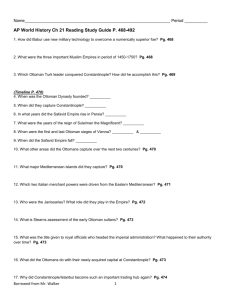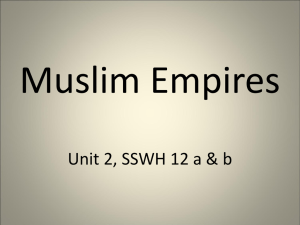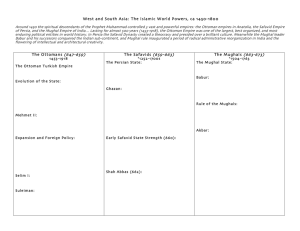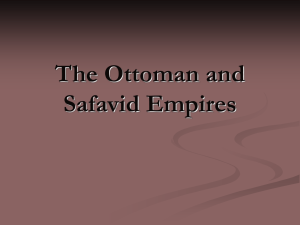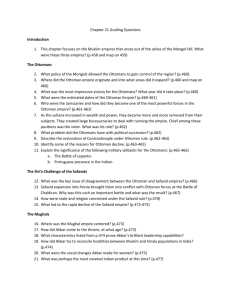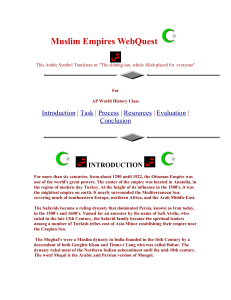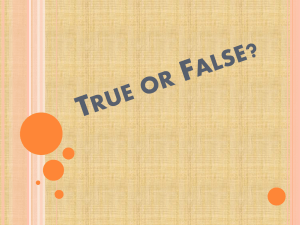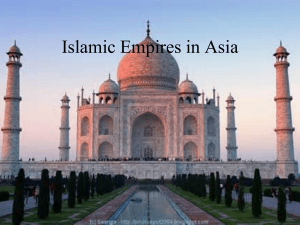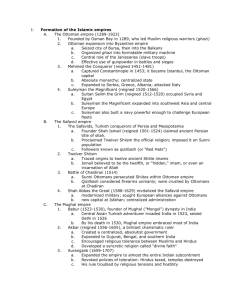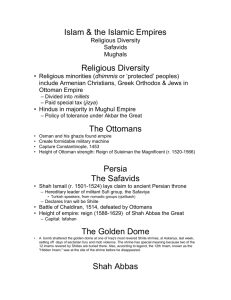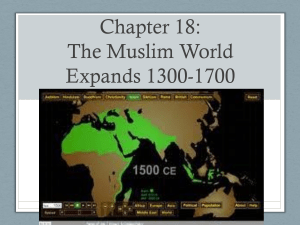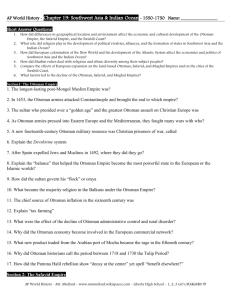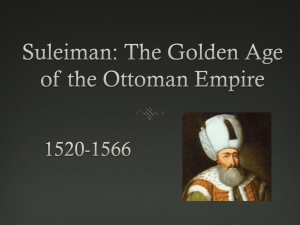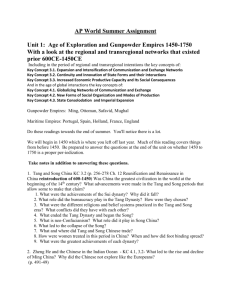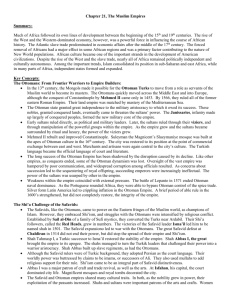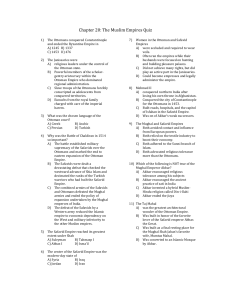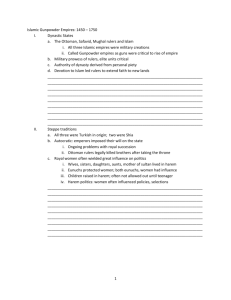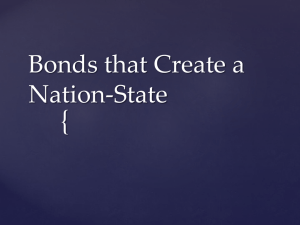Muslim Empires
advertisement
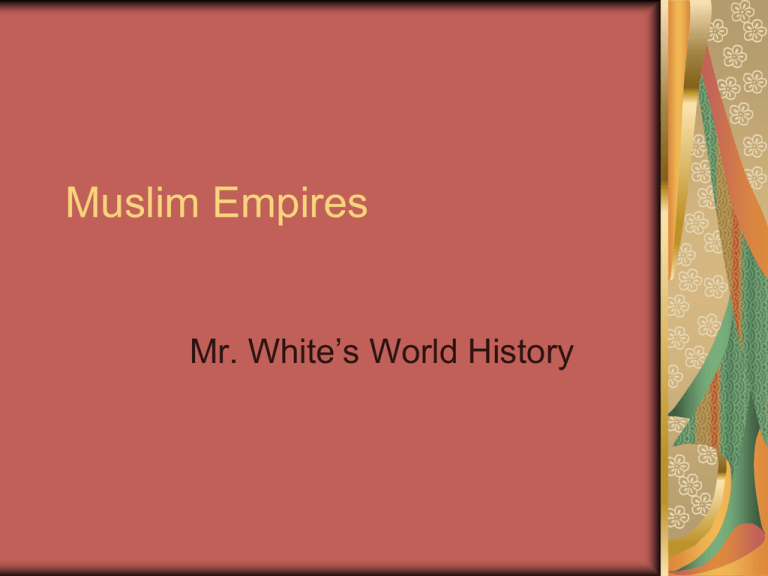
Muslim Empires Mr. White’s World History Objectives After we have studied this section, we should be able to: Describe how Muslim rulers in the Ottoman, Persian, and Mughal empires governed much of the Middle East, North Africa, and India. Understand the geography of the Middle East and Indian Peninsula Three Empires Ottoman Empire – ruled in modernday Turkey, Palestine, North Africa, and parts of Saudi Arabia, 1299-1923 Safavid Persia – ruled in modern-day Iran from 1501-1722 Mughal Empire – ruled in modern-day India from 1526 to mid-1800s The Three Empires The Ottoman Empire – Suleiman the Magnificent Suleiman was the first major ruler of the Ottoman empire (1520-1566) He served as both a political and religious ruler Sultan – political ruler Caliph – religious leader Suleiman used a well-trained army and bureaucracy to carry out his rule Ottoman Architecture Suleiman, the Lawgiver Suleiman had to create laws to govern many different types of people – Christians, Muslims, and Jews Non-Muslims would be allowed to worship as they pleased, as long as they were loyal to him He reformed the administration of the country as well, and created laws to make it run better Decline of the Ottoman Empire The Ottoman empire began a steady decline in the 1600s. During the 1880s, the Ottoman empire reformed the military and government By the end of the 1800s, the Ottoman emperor took back many of Suleiman’s reforms, and instituted absolute rule By the end of World War I, the Ottoman empire ceases to be a major power Safavid Persia and Shah Abbas Shah Abbas was the greatest ruler of Safavid Persia. Persia, at this time, is Shi’ite Muslim. Ruled from 1581 to 1629. Shah Abbas made alliances against the Sunni Ottomans, sometimes with European nations The Persian language spread as the language of culture, diplomacy, and trade After Shah Abbas, Safavid Persia gradually declines until 1722 The Mughals Timur Lenk, a TurkoMongol, conquered much of Central Asia, and his empire would become the empire of the Mughals in India Babur, a successor of Timur’s, reconquered northern India Encouraged orderly government Expanded the arts Akbar After Babur, Akbar brought peace and order to the Mughal empire. Since most people he ruled were Hindus and not Muslims, he encouraged religious tolerance Repealed a tax on Hindus Invited religious scholars of other faiths to his court to debate religion Art, Music, and Literature Art, music, and literature flourished under Akbar As Akbar recognized the value of education, he set up a library to preserve educational writings Mughal Architecture The Decline of the Mughals By the 1600s, Hindu rebellions and a new emerging religion, Sikhism, led to the decline of the Mughals Most Indians had held on to Hindu customs and had not converted to Islam Later Mughal rulers abandoned religious tolerance, so this made many Hindus angry Decline of Muslim Empires These three Muslim empires declined as Europe and its countries expanded Rulers declined, and brought their countries with them Lack of innovation and change – not “dynamic”, like Europe Were all land empires – didn’t focus on sea power or trade, like Europe Superiority complex – considered themselves superior to Europe, didn’t pay much attention to European growth

